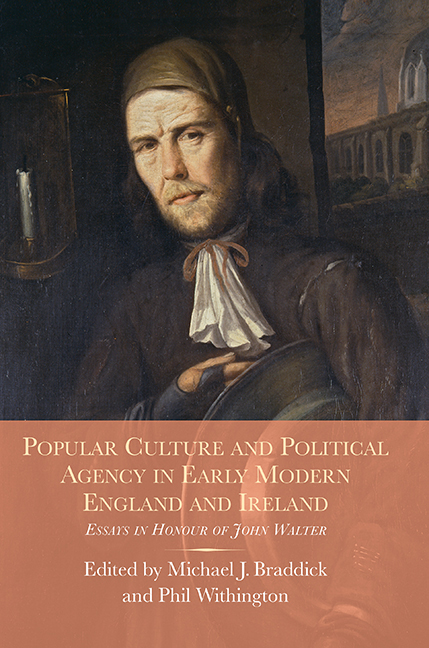 Popular Culture and Political Agency in Early Modern England and Ireland
Popular Culture and Political Agency in Early Modern England and Ireland Published online by Cambridge University Press: 09 May 2017
Sir John Newdigate of Arbury, Warwickshire (1571–1610) has come to be regarded as the ideal type of ‘the public man’ in early Stuart England. Richard Cust's painstaking analysis of his commonplace books has demonstrated how Newdigate aspired to personify the conscientious magistrate fired with the zeal of civic duty. Newdigate's reading strategy arguably exemplifies the formation of the political culture of the provincial magistracy, revealing how the central themes of Renaissance political thought were internalised in the gentry parlour and on the sessions bench. Through the lens of Newdigate's early schooling and exhaustive programme of continuing education, Cust suggests, we can see how a common stock of aphorisms and examples helped inculcate the values of civic humanism – wisdom, incorruptibility, courage, love of justice, love of country and, above all, love of God – which were supposed to unite the gentry as a governing class.
Newdigate's lived experience as an active magistrate was, nonetheless, rather more controversial than this pious self-image suggests. During the very period when he was so assiduously ‘reading for magistracy’, Newdigate's personal and public roles as landlord and justice of the peace respectively brought him into conflict both with his own tenants and with the law officers of the crown. In June 1607, during the ‘commotion time’ of the Midland Rising (that series of anti-enclosure protests that convulsed the counties of Leicestershire, Northamptonshire and Warwickshire) Newdigate suppressed a series of riots on his own estate at Arbury. In retaliation, his neighbours subjected him to an orchestrated campaign of harassment and intimidation, characterising him not as a defender of the commonwealth but as an enemy of the people. In May 1608, Newdigate accused six of these conspirators of seditious libel in the court of Star Chamber, only to find that he was, in turn, prosecuted on behalf of the crown in the very same court by Attorney General Sir Henry Hobart, who charged him with depopulating enclosure. By unpacking the narrative implicit in this tangled skein of litigation and reading it in the context of Newdigate's own views about how a conscientious magistrate should conduct himself, this chapter analyses the complex relationship between the actual experience and the public representation of magistracy in early seventeenth century England.
The Midland Rising remains one of the most significant, yet paradoxically least explored, episodes of popular protest in the historiography of early modern England.
To save this book to your Kindle, first ensure [email protected] is added to your Approved Personal Document E-mail List under your Personal Document Settings on the Manage Your Content and Devices page of your Amazon account. Then enter the ‘name’ part of your Kindle email address below. Find out more about saving to your Kindle.
Note you can select to save to either the @free.kindle.com or @kindle.com variations. ‘@free.kindle.com’ emails are free but can only be saved to your device when it is connected to wi-fi. ‘@kindle.com’ emails can be delivered even when you are not connected to wi-fi, but note that service fees apply.
Find out more about the Kindle Personal Document Service.
To save content items to your account, please confirm that you agree to abide by our usage policies. If this is the first time you use this feature, you will be asked to authorise Cambridge Core to connect with your account. Find out more about saving content to Dropbox.
To save content items to your account, please confirm that you agree to abide by our usage policies. If this is the first time you use this feature, you will be asked to authorise Cambridge Core to connect with your account. Find out more about saving content to Google Drive.